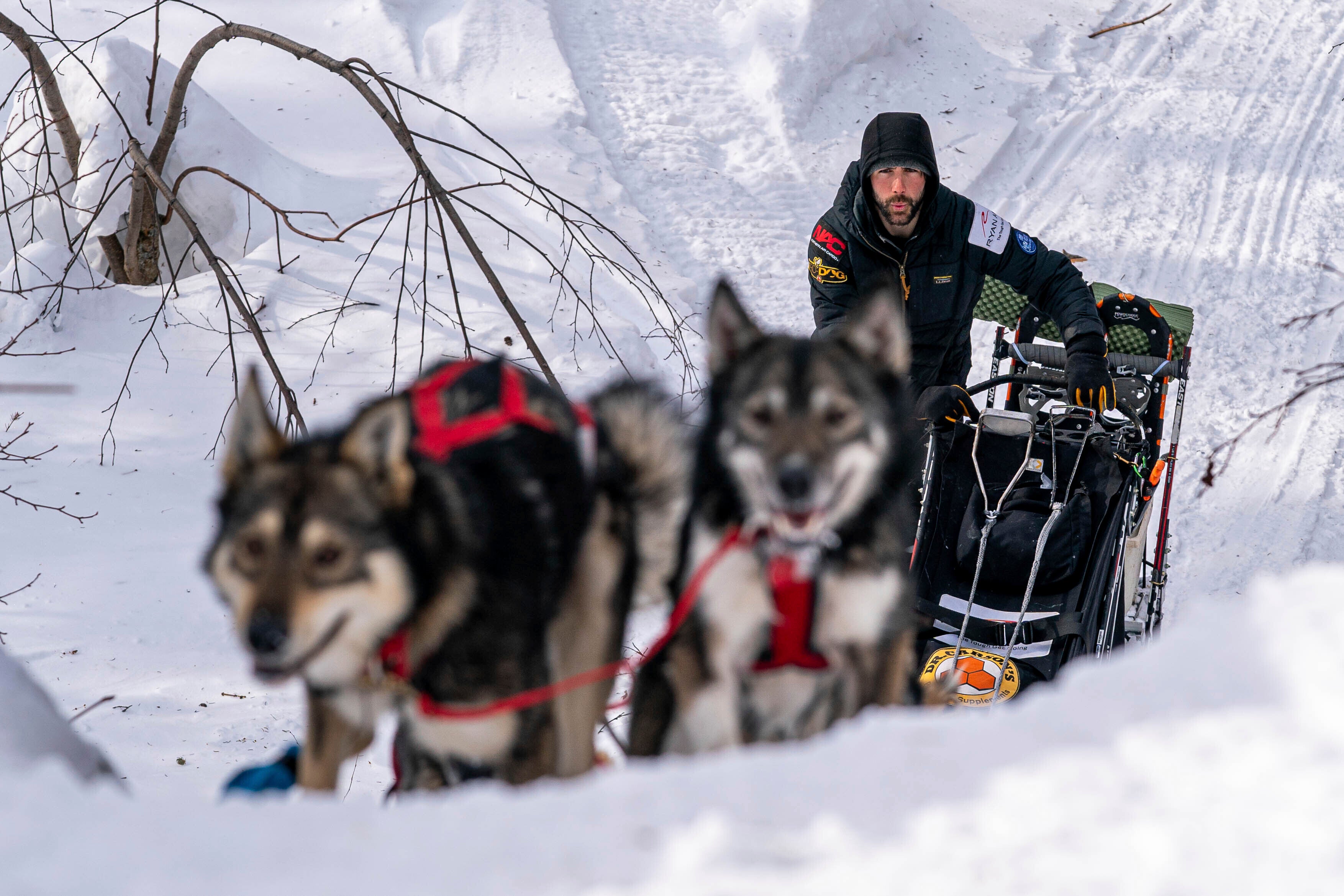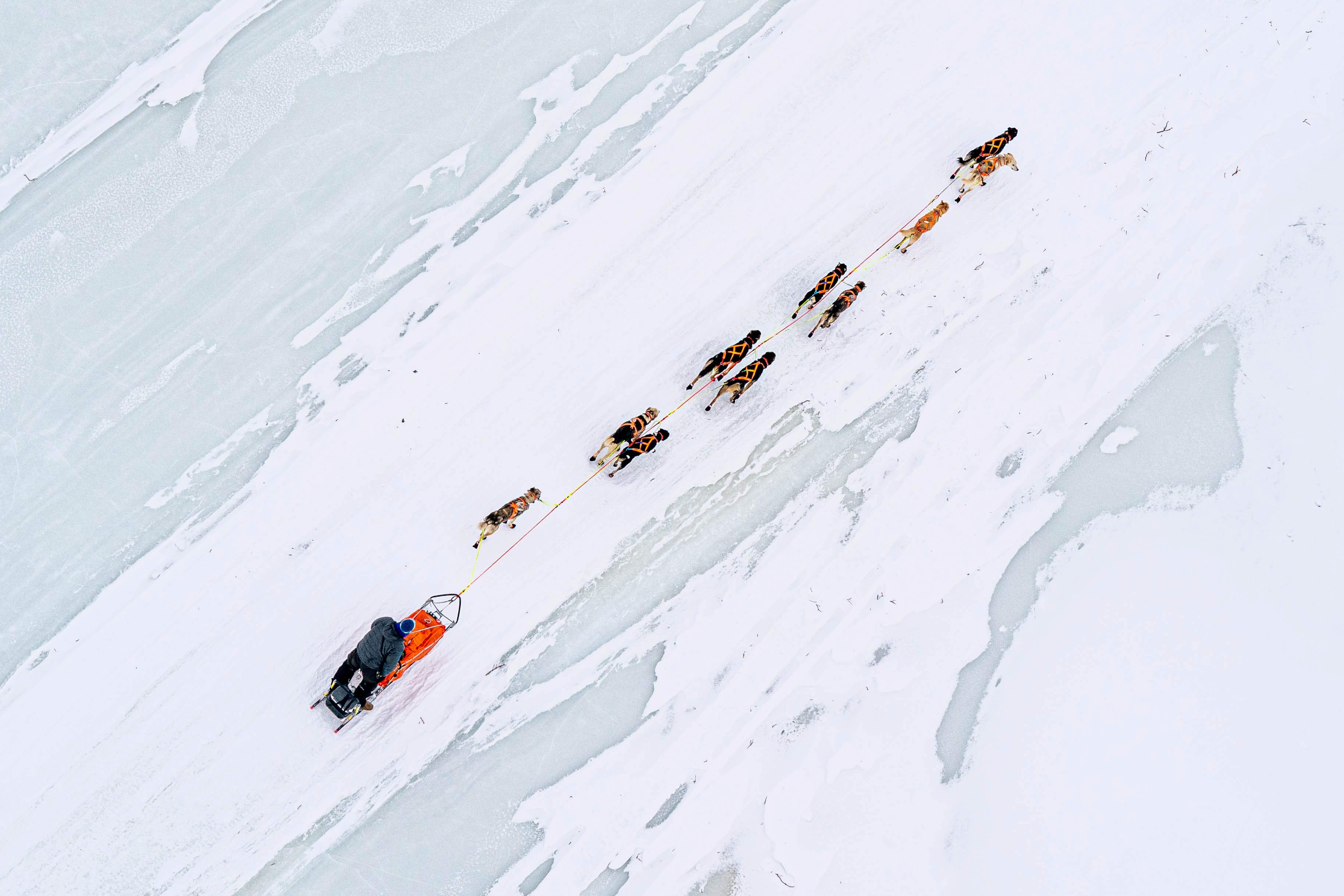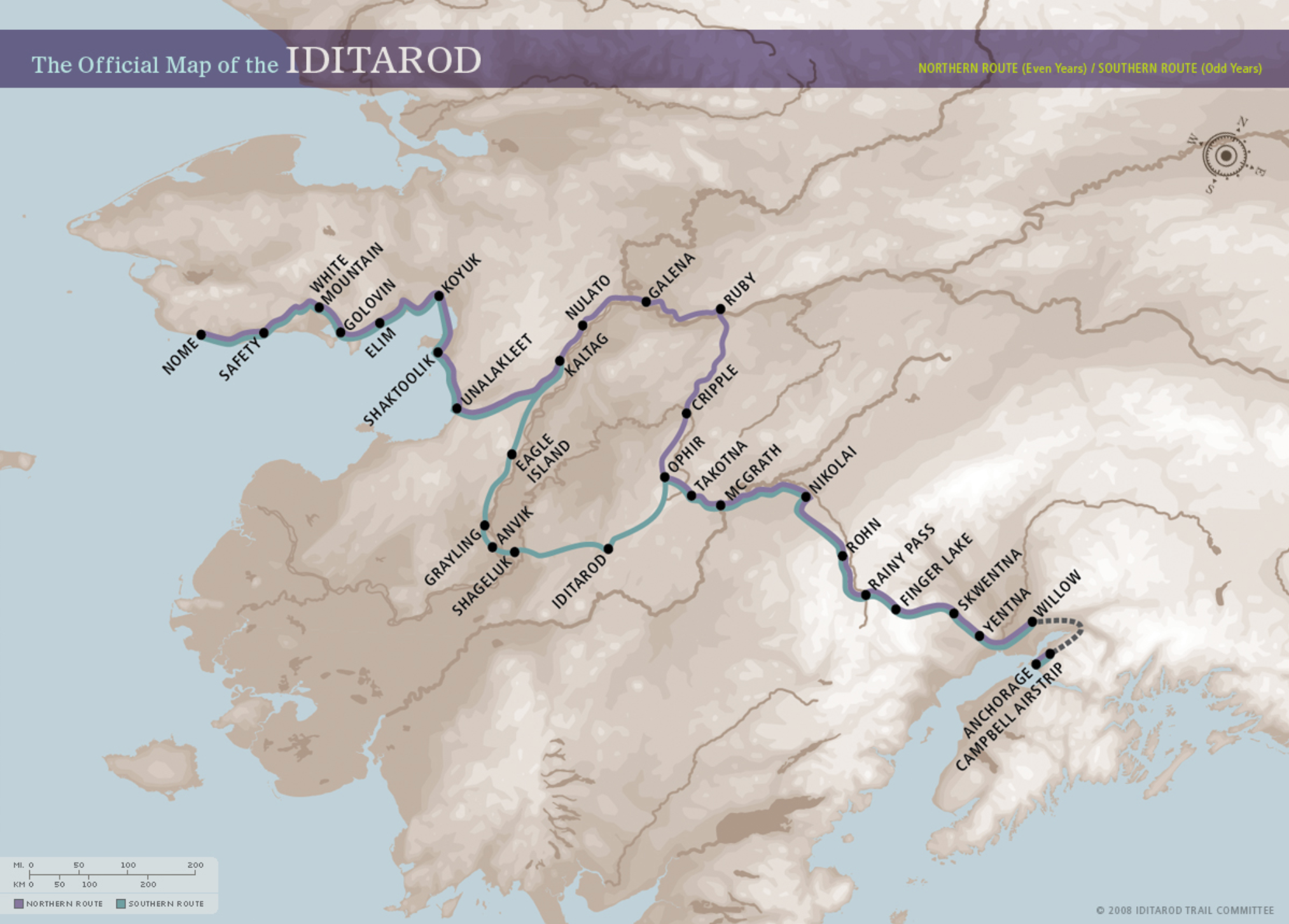The climate crisis is eating away at the trail of the world’s most famous dog-sled race
Pandemic aside, change is coming to Alaska’s 1,000-mile Iditarod race as the climate crisis is causing the state to warm at more than twice as fast as the Lower 48, writes Louise Boyle


For the 49th year, the world-renowned Iditarod Trail Sled Dog Race has taken place in Alaska.
The winner, Dallas Seavey, crossed the finish line in the early hours of Monday as the second person ever to win the race five times. “It’s a big deal,” he said after completing the merciless competition in 7 days, 14 hours, 8 minutes and 57 seconds.
Covid-19 didn’t prevent the Iditarod from starting on 7 March with 46 competitors, known as mushers. However the trail was shortened from 1,000 miles (1,609km) to 850 miles (1,368km). Competitors were re-routed around most rural villages which normally serve as checkpoints, leaving the competitors to sleep in tent camps in temperatures that dropped to minus -48C.
Read more:
“We reinvented everything we do,” Iditarod CEO, Rob Urbach, tells The Independent. “Most of the major [dog sled] events have been cancelled around the world but we had a robust testing protocol which we spent several months planning and pressure testing.”
Mushers set off from Willow, travelling to the ghost town of Iditarod and then looping back to finish in the town. While 46 competitors started, nine dropped out for reasons including injury and a positive Covid test.

Competitors typically race from Willow (after a ceremonial photo-op in the state’s largest city, Anchorage) in a winding route across the wilds of Alaska. The race ends in Nome, a town of less than 4,000 people on the edge of the Bering Sea, some 50 miles from Russia.
“The Iditarod was envisioned as a way to honour the culture of the sled dog and its importance to life in all Arctic communities,” Urbach says.
Parts of the Iditarod trail were used by the indigenous communities of Inupiaq and Athabaskan peoples for centuries before settlers travelled the route to Alaska’s oil and gold fields in the late 1800s. It became a supply and mail route between towns in areas inaccessible except for by dog sled. In 1925, some 20 mushers and about 150 dogs relayed across the state to bring medical supplies to Nome during a diphtheria epidemic which threatened to wipe out the population. This became known as “The Serum Run” and forms part of the current route.
Teams race with packs of 12-16 dogs across the tundra and through forests, taking in mountain passes and river crossings. Only breeds suited to the harsh conditions, Siberian huskies and Alaskan malamutes, are allowed to race.
A small army of 1,500 people are needed to produce the event and around a dozen people support each competitor, all via flights in ten commercial planes and 30 smaller aircraft.
Even without the ripples caused by the pandemic, change has been long coming to the Iditarod.

Alaska is on the front lines of the climate crisis. The state is warming at twice the speed of the rest of the US, and average winter temperatures have risen by more than 3C since the 1950s. Glaciers are cleaving apart, permafrost is thawing and sea ice extent is on the retreat.
The planet is heating more quickly overall. The 10 warmest years have all occurred since 2005 and 2020 was tied with 2016 for the hottest year on record.
It’s a red alert for the Arctic region with serious consequences for subsistence, tourism and cultural life, particularly in Indigenous communities who feel the impacts daily. Hunting, on which tribal communities depend for nutrition and financially, is becoming more difficult and dangerous as the ice thins and animals adopt new migration routes. So far more than 30 Native Alaskan villages need to be relocated entirely, according to the EPA.
When it comes to the Iditarod trail, some frozen expanses are no longer reliable. Temporary bridges have been built in a section called the Dalzell Gorge, a particularly treacherous section of the trail where open water is now a problem. Vegetation has sprung up in new places, and exposed rocks and tree roots can make it tough on the dogs and mushers.
“The Iditarod has undergone several changes over the years due to weather being uncooperative,” Rick Thoman, climate specialist with the Alaska Centre for Climate Assessment and Policy at the University of Alaska in Fairbanks, tells The Independent.
The race used to start in Wasilla where Iditarod headquarters are located, he explains, but was permanently moved around 30 miles north to Willow due to lack of ground snow in 2008. In 2003, the Iditarod start was moved 300 miles north to Fairbanks, and again in 2015 and 2017, due to lack of snow.
Thoman adds: “Maybe the most dramatic thing in recent years was in 2019 when there was a complete collapse of Bering Sea ice. It led to an iconic photograph of [musher] Aliy Zirkle coming into Nome. The trail was rerouted off the ice and onto the beach, and you could see open water directly behind her. That was utterly unprecedented and certainly a big concern.”
The climate is not the only crisis to have plagued the Iditarod. Animal rights organisation Peta calls the race a “deadly nightmare” for the dogs and has pressured sponsors to drop financial support. Urbach says that the race organisers are “focused on exemplary dog care”.
“We view the dogs as elite athletes. Our focus is on training, nutrition and wellness,” he adds.
He says that while critics denounce the race for subjecting the dogs through freezing conditions, “the opposite is the truth”.
“The sled dogs run best below zero degrees so when it’s above [-6C] the real issue is them being too warm. So you’ll probably see more teams resting during the relative heat of the day and making big moves at night.”
In the long run, climate change is likely to dramatically change the Iditarod route. And if the competition is forced to move further north to find more suitable conditions, then an existential question arises: is it still the Iditarod?
“That’s one we bandy about here in Alaska,” Thoman says. “In the coming decades ... there won’t be enough snow south of the Alaska [mountain] range. If the Iditarod start permanently moving to the Interior [north of the Alaska range] then that’s really a different race. With the trends we’re seeing, spring has the second most warming after winter. In 20 years, we’re likely to see that the conditions just don’t support mushing out of Willow in March.”
While overall trends point to increasingly warm winters in Alaska, conditions still vary widely from year to year. Urbach says heavy snowfall arrived ahead of this year’s race, and in the several years prior. However, he notes that climate change appears to have also brought greater volatility.
“Last year we had so much snow at the start, 11 mushers were trapped for 48 hours,” he says. “But there was also overflow, which is caused by a fast, early snow piling up like insulation over a river and preventing it from freezing. When that breaks loose through wind or storm, it unleashes a dam. We had Blackhawk helicopter rescues for three mushers who got caught in overflow and icy slush.”
He adds: “Data will probably show that Alaska’s temperatures are rising and there's more glacial melt but it's not a linear dynamic.”
Next year is the 50th anniversary of the Iditarod, and Urbach is confident that the race has many more decades ahead.
“The Iditarod is synonymous with challenges. It will find a way no matter what.”
Join our commenting forum
Join thought-provoking conversations, follow other Independent readers and see their replies
Comments
Bookmark popover
Removed from bookmarks